Grant Gautreaux
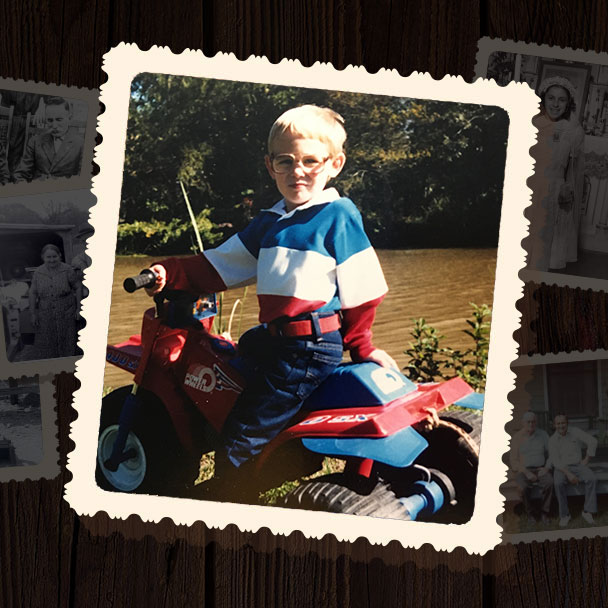
Current Hometown: Thibodaux Gautreaux was born in Grand Bayou, but moved with his parents to Pierre Part when he was 6 years old. His younger brother was the last child born in Grand Bayou. Favorite Thing to Do I just liked to play outside. We had a big tree. We had a tree that got struck by lightning or something and had fallen down in the yard, but the tree didn’t die, the tree stayed alive, it just laid down in the yard and I just played on that tree all day, but it’s gone, though. Favorite Memory I would say probably playing on that tree and living next to my great grandmother. It was pretty nice. I got to know who my great grandmother was and we lived right next door to her. I just remember being in her house and visiting with her. My dad cut the whole property, cut the grass and everything, you know. I was just lucky cause, we didn’t really have other family that lived in Grand Bayou. It was just us and her at the time. Most Missed Not living around a bunch of people. I liked the seclusion of it, I guess. You know, it was quiet, there wasn’t a ton of people, you didn’t have to worry about like, I dunno, it was just peaceful. We lived out there with almost nobody else, and it was just really quiet all the time. Yeah, and we lived right on the bayou side so, you know, it was just beautiful out there. You didn’t have all this noise, like city noise and traffic noise all the time. You didn’t have that much light pollution. We lived right on the bayou side so, you know, it was just beautiful out there. You didn’t have all this noise, like city noise and traffic noise all the time.
Talkin’ // Speech in Grand Bayou
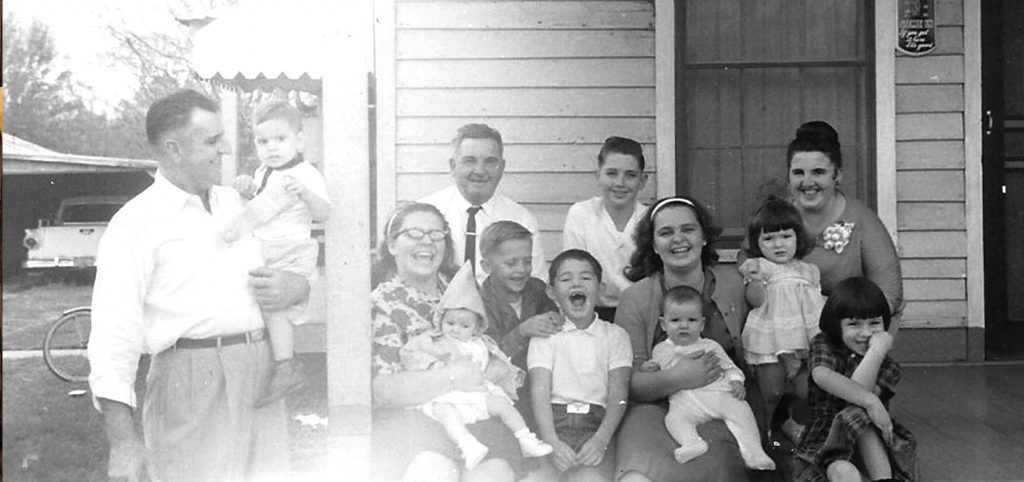
Every community has its own way of speaking, from phrases to mannerisms to nicknames. But throw in some French Acadians in a protected rural environment, and the culture is ripe for speech that is hard for outsiders to understand!
Loose Grind Meat Spaghetti
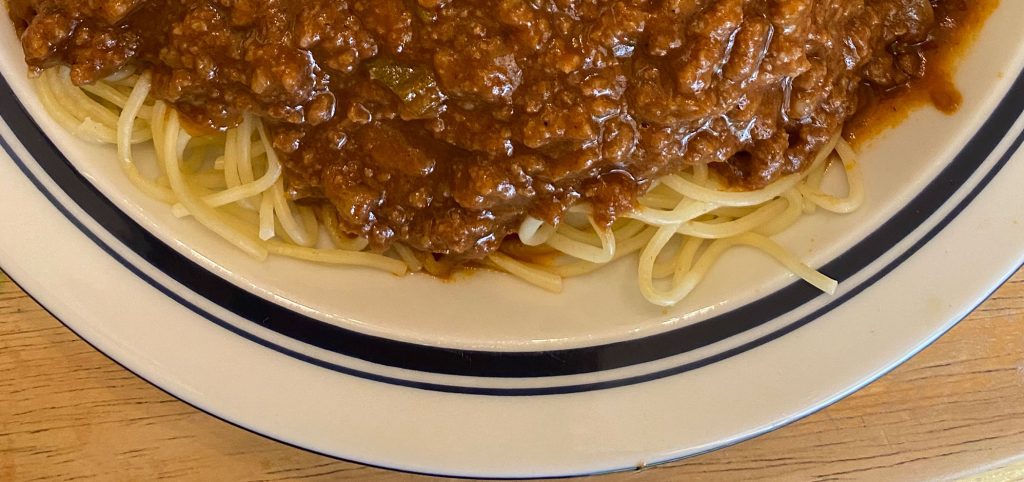
The ultimate comfort food of the Addie Rousseau family was Maw Maw Mabel’s “Loose Grind Meat” spaghetti. As any real Cajun cook, she created her family favorites with no written recipe. And when she told her daughter-in-law Kathleen Whaley Rousseau the recipe, she omitted the “secret ingredient.” That is until they were all stuck inside for Hurricane Andrew and Kathleen watched Maw Maw put in two big spoonfuls of BBQ sauce. When questioned about it, Mabel said, “Mais Kathleen. I always put two big cookin’ spoons of barbeque sauce in my spaghetti!” No wonder it never tasted the same….. a grand bayou recipe LOOSE GRIND MEAT SPAGHETTI Mabel (Maw Maw) Hebert Rousseau’s famous loose grind meat spaghetti from Grand Bayou. INGREDIENTS 1 cup flour 1 cup oil 1 large onion 1/2 small bell pepper 8 oz tomato paste 1 lb ground beef salt & pepper garlic powder Tony Chachere’s seasoning 2 tbsp Lea & Perrins Worcestershire Sauce 1/4 cup parsley 2 cups of water 1/4 cup green onion 2 cooking spoons Kraft barbecue sauce 1 lb spaghetti noodles Make Sauce 1 Stir 1 cup flour and 1 cup oil until it turns brown to make a roux Add onion and bell pepper to the roux and wait for them to wilt. Once wilted, add the tomato paste to darken the roux, stirring constantly to avoid sticking. Add ground meat, garlic powder, salt, pepper, parsley, Tony Chachere’s and Worcestershire sauce. Once meat is browned, add 2 cups water along with the green onions. Season to taste. Cook on low for 15 minutes, adding water as needed. Right before serving, add 2 cooking spoons of Kraft barbecue sauce. Let simmer for 10 minutes. Noodles 2 Boil water and cook spaghetti noodles until desired level Serve 3 Serve sauce over spaghetti noodles with parmesan cheese.
Pineapple Upside Down Cake
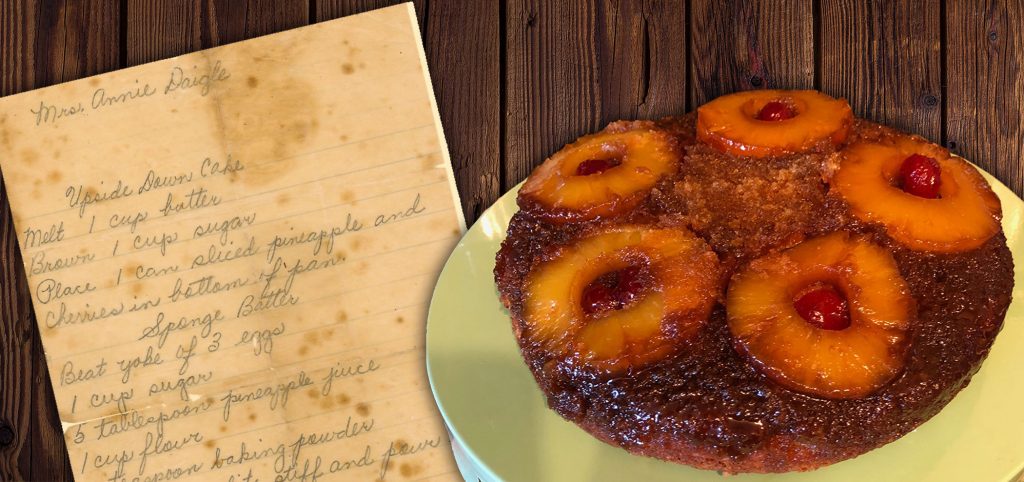
Mabel “Maw Maw” Hebert Rousseau was famous for [her pineapple upside down cake]. For church bake sales, people in the community (from Grand Bayou to Paincourtville) would call her to see if she was making it and they would reserve it for themselves so it wouldn’t ever make it to church! It was a race to see who could call her first. —Granddaughter Nicki Lirette Boudreauxhttps://youtu.be/Yb4ZKV4f0Cg a grand bayou recipe PINEAPPLE UPSIDE DOWN CAKE Mabel (Maw Maw) Hebert Rousseau’s famous cake recipe from Grand Bayou. INGREDIENTS 1 cup flour, sifted 1 tsp baking powder 5 tbsp pineapple juice 1 cups white sugar 3 egg yolks 3 egg whites, whipped stiff 1 cup white sugar 1 block butter, melted pineapple and cherries, sliced Batter 1 Mix flour, baking powder, pineapple juice, 1 cup of white sugar, egg yolks and whipped stiff 3 eggs whites in bowl. Reserve batter Topping (in pan) 2 Brown 1 cup sugar and put in bottom of pan Put melted butter on top of browned sugar Arrange pineapple and cherry slices next Pour reserved batter in pan Bake 3 Preheat oven to 350 degrees Bake for 30-35 minutes until cake is brown, or, as the old recipe says, use a broom straw to test the cake in the middle and the cake is done when the straw comes out clean
The Cajun Cookbook
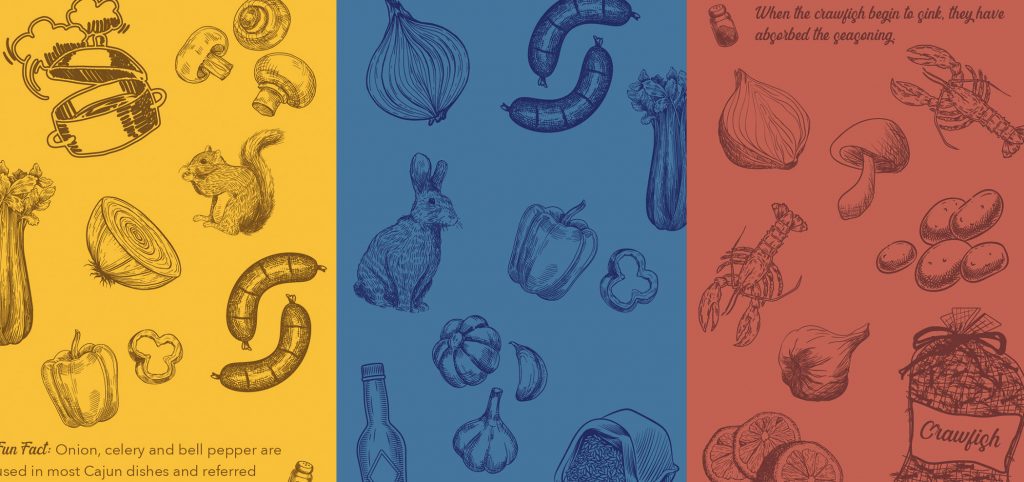
The Center of Faith // St. Elizabeth
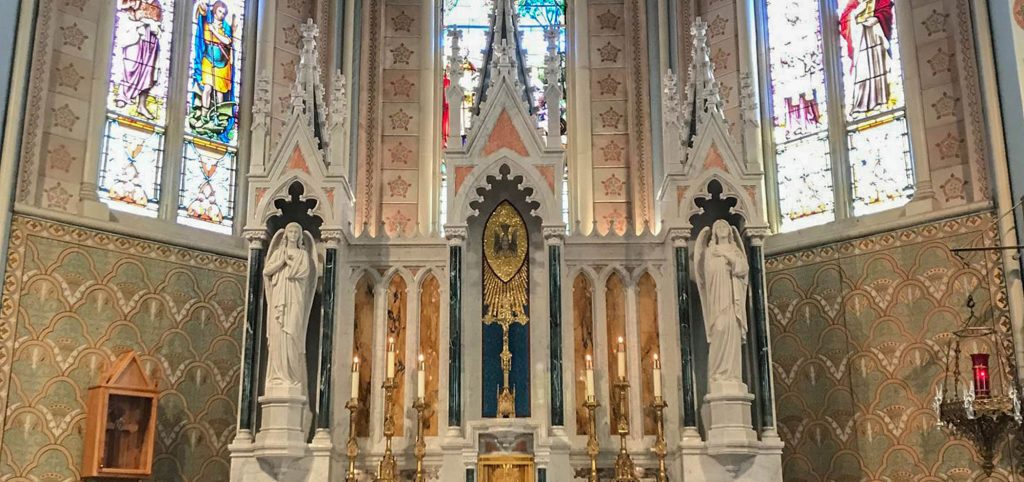
By Chakyra Butler, Staff Writer In Paincourtville, about five miles away from Grand Bayou, stands a brick, Gothic-style Catholic church with twin towers. St. Elizabeth Church has been the religious center of the area, including Grand Bayou, for more than 100 years. “It is still just so special,” says Jessica Rousseau Baye, a Grand Bayou native. “It’s a huge, beautiful church in a very very small community. There are so many of those in Louisiana, but ours is special.” For some residents, the church’s physical appearance makes it stand out. “It is gorgeous,” says Jerry Rousseau, 81, a Grand Bayou native who has been attending St. Elizabeth Church since he was a baby and was even baptized there. “It’s a Gothic-style church. All paintings on the ceilings and all that.” He says the church has not changed much since he was a child, except for the altar being changed. Almost everything else, like the seats, are the same and, he says with a smile, the seats are still uncomfortable. At one time, churchgoers paid for their own pews. Families often paid 25 cents to “own” a pew, designating that spot in the church as their assigned seats. Rousseau says he remembers his family owning a pew on the left side of the church. Now, Rousseau says visitors sit wherever they want. While the physical structure is memorable, parishioners say it’s the life lessons that mean the most. “When I go in that church, I just see all my family there,” says Betty Crochet Breland, who was born and raised in Grand Bayou. “I see all the Grand Bayou people.” Breland and Baye’s shared grandmother, Adele Rousseau, was the bride in the first officiated marriage held in St. Elizabeth. Breland says St. Elizabeth was the center of the surrounding towns. Grand Bayou, Bayou Corne, and the church brings back memories of communities coming together to worship. “It’s always going to be a part of our lives,” Baye says. “It’s never gonna go away.” People who have moved away from the area still travel back to St. Elizabeth to have Mass and bury family members. Baye says she now goes to St. John the Evangelist in Thibodaux, but she and her family still go to St. Elizabeth for special events. And as Baye told the last of her grandchildren who attended St. Elizabeth School: “No matter where you go, you are never gonna find another school and church like this in your entire life. You will always have this memory, and it’s beautiful.” Charles Hebert’s first communion at St. Elizabeth. The painted ceiling at St. Elizabeth. Janet Daigle and Perry Blanchard’s wedding at St. Elizabeth. Addie Rousseau and Mabel Hebert’s wedding certificate from their wedding at St. Elizabeth. Hazel and Ellen Aucoin at Ellen’s confirmation. Olga Rousseau’s baptismal record from her baptism at St. Elizabeth. CONFIRMATION First cousins making their confirmation together. From left: Dale (Hazel), Jessica (Picou), Clyde R (Alma), Katherine (Nice), Uggy (Roy), Cookie (Alma) The St. Elizabeth altar. Second Communion
Work // Making a Living
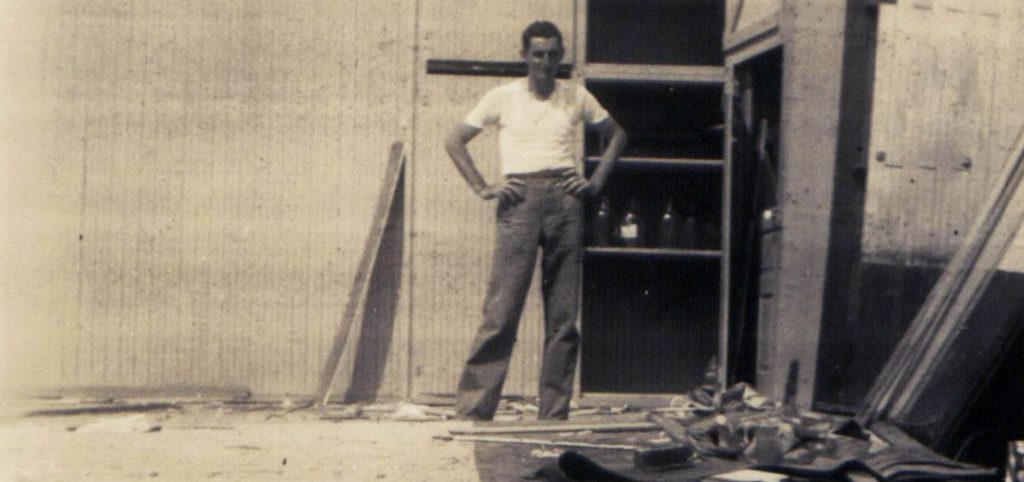
By Emilee Theriot, Staff Writer Grand Bayou was once the home to a thriving business community including a saw mill, a cotton gin, a broom factory, a moss gin, a country store, a dance hall and a barber shop, according to the Assumption Pioneer and documents written by former resident Hazel Aucoin. Growing up, Aucoin says she remembers the men doing mostly swamp work. They cut cypress and floated it down the bayou. They dredged canals, so the men could get to work cutting the cypress trees. They used cypress to make crossties, roofing shingles and cistern staves. Some men worked at a dry dock where boats and barges were built and repaired, while other men did carpentry, picked moss for the moss gin or worked for the sugar factory. People hunted and fished, made gardens and milked their own cows. “In those days moss was in everything, car seats, mattresses, etc.” says Jerry Rousseau, who grew up in Grand Bayou. “The moss business dried up because something better was developed.” Rousseau’s grandfather ran the moss gin that operated in Grand Bayou, where Rousseau said he remembers playing in the early 1940s, once it was abandoned. The first bridge over Grand Bayou was named La pon Ford, meaning Ford’s Bridge, after the man who built it. Aucoin says there were no gravel or paved roads, only dirt roads. Businesses and the community used waterways for transportation. In 1953, Aucoin’s husband died at a young age, leaving her with four children to raise. One of Hazel’s children, Nell Naquin said to support her family, her mother sewed and cut men’s hair. She also made wedding dresses and prom dresses. “Every Friday men would show up from 8 a.m. to 8 p.m, to get their hair cut in the family kitchen,” Naquin says. Dirt roads turned to gravel roads and ultimately paved roads. Grand Bayou’s businesses and workforce changed from cypress cutting and moss picking to retail and other industry. By the 1940s and 1950s, Grand Bayou consisted of a grocery store, gas station, Priscilla’s restaurant, wholesale seafood business and trucking companies, says June Dupre Bouchereau, a former resident. Dupre’s family owned and operated the Howard J. Dupre Jr. Grocery Store and gas station. The store carried general merchandise like fresh fruit, beans, kerosene, canned goods, meats, soft drinks, beer, bread, brooms and more. Residents also worked in businesses outside of Grand Bayou. Bouchereau and some of her friends commuted to Donaldsonville to work at B. Lemann & Bros. Department Store. Some of the Grand Bayou men worked offshore while others worked at chemical plants along the Mississippi River. Sugar cane farming was a common business in and around Grand Bayou. Bouchereau says her Dupré family store—next to the family home—had a porch in front where men would gather. “It had double front doors with a cash register to the right of where you walked in. There were great big counters to the left and big shelves in the middle, in the back were more shelves and a back door with wooden steps,” Bouchereau says. In 1954, her father, with help from the community, built a larger store on the other side of their house. “At Grand Bayou, everybody kind of helped each other build boats and houses,” Bouchereau says. Tracy Scioneaux, who lived in Grand Bayou from the 1970s to the early 2000s, says her family also owned businesses. Her grandparents, Youman “Buck” and Maggie Albarado, owned and operated the Buck’s Inn restaurant, a popular eatery that closed in the early 1970s. Her father, Edward Scioneaux, operated a number of businesses to support his family of nine. The family had a trucking company, the Three Way Mobile gas station, and also grew and harvested sugar cane. All seven children worked in one or more of the family businesses. “My parents taught us to work at a young age,” Scioneaux says. She says her fondest memory growing up was going to the fields at the end of grinding and celebrating her dad’s last day of harvesting with her family. Edward Scioneaux sold his sugar cane to a local sugar mill. Jason Blanchard’s grandfather, Morris Daigle, worked at the Lula Sugarcane Factory in Belle Rose, La. for 47 years. “He ran the repair, maintenance and construction at the mill,” Blanchard says. He says his grandpa was an engineer and created a hydraulic lift to quickly connect and disconnect trucks from the cane trailers among other inventions. Grand Bayou has seen a lot of changes over the last one hundred years. Gone are the residents and all the family businesses. The once thriving business community of Grand Bayou consists of one local business, a convenience store on the corner of Louisiana Highway 70 and Highway 69. The sugar cane fields and cotton fields are now the site of the Texas Brine Plant and the Dow Chemical Brine Production and underground storage facility. Addie Rousseau drove crew boats to the oil rigs in Grand Bayou. Howard Dupré Jr. in front of his general store. Scioneaux Trucking Company Morris Daigle, an engineer, with one of his creations at a sugar mill. The Buck Inn
Food // A Family Centerpiece
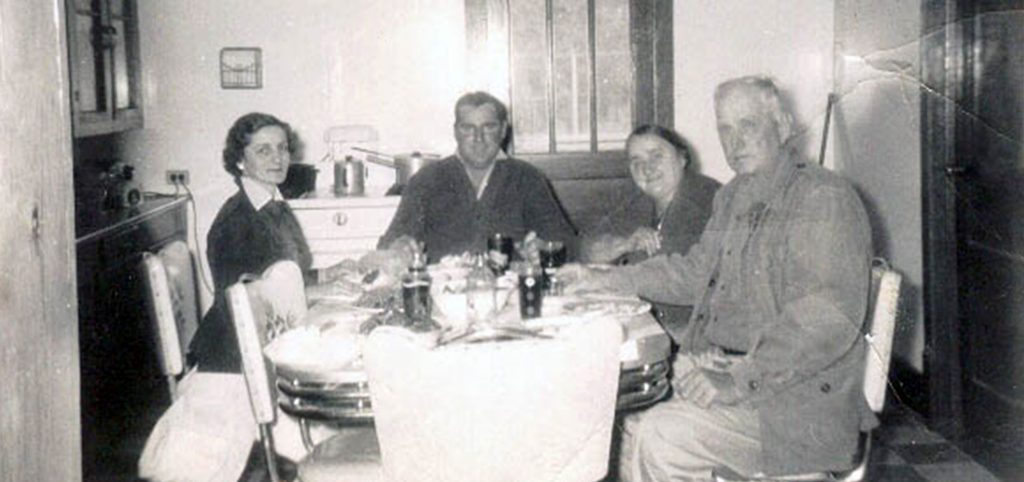
By Jade Gallaher, Staff Writer Food in Grand Bayou was not only the center of family gatherings but was also a celebration of the land where they lived. “I can remember for years and years, my mom and her sisters would get together every year and would get several sacks of crawfish and make crawfish bisque at one of their houses,” says David Schexnaydre, who visited Grand Bayou often. One of his favorites, crawfish bisque is peeled crawfish tails mixed with onions, garlic, breadcrumbs and various other spices that are then stuffed into the cleaned heads of the crawfish and fried. Brown gravy is poured over the top of them before serving, Schexnayrdre says. Grant Gautreaux, one of the last people born in Grand Bayou whose mother’s family were in the commercial fishing industry, says seafood and crawfish were a staple. “We ate a lot of crawfish in all types of forms, lots of stews, a lot of boiled crawfish, fried crawfish tails and fried fish,” Gautreaux says. “If one of my uncles would go catch a sack or two sacks of crawfish, everyone would sit around to peel them and take home their share of the crawfish.” The people of Grand Bayou may have all lived within the same community, but the meals on every table were different. While most recipes were different variations of the same ingredients, other dishes included corn soup, potato stew and crepes.A lot of the families’ food came from the land they lived on. “You had a lot of native fruit. There were persimmon trees, there were muscadine vines, there were maypops and there were honeysuckles,” says Greg Leblanc, a Grand Bayou native. These fruit trees are indigenous to South Louisiana and have disappeared from many places known to the people of Grand Bayou because of land damage.A lot of Grand Bayou residents grew up watching their parents bring produce from their farms to the table. “My father was a farmer and grew corn. So, he would say, ‘Momma, wanna make corn soup today? I’ll go get a mess of corn, and then we’d make corn soup,” says Jessica Rousseau Baye, who grew up in Grand Bayou. Eating from the earth the majority of the time was not the only thing most of these families had in common, but also that they had meals together. “We always ate together,” Baye says. “Other than breakfast, because we were going to school and catching the bus. Daddy was in the field probably earlier than us. But, on weekends, lunch and supper every night we ate together at a table, and I think that is not done very much except on special occasions.” a few grand bayou Recipes
Betty Crochet Breland
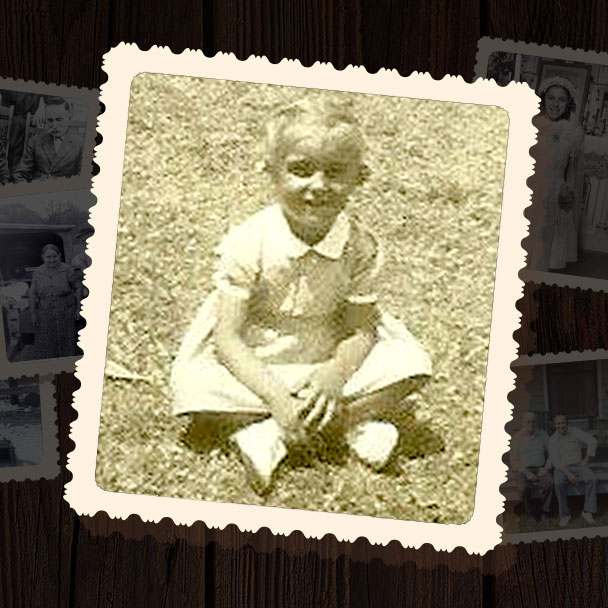
Current Hometown: Belle Chasse While Breland was born in Grand Bayou in 1938, her family moved away when she was an infant. But she visited her grandmother in Grand Bayou frequently. Favorite Thing to Do Get on my grandmother’s porch with my crawfish net and catch crawfish off of the porch during high water. Favorite Memory Riding my cousin’s bicycle to visit my grandmother on the other end or visit my aunt on the other end of the street. It was called (Latre Bewt) meaning the other end. Also had a Gambling Joint called (la comte brue) at the end of the street where I would go to get malts or milkshakes that were made with the minimum of ingredients. (milk & shaved ice) Riding the bus during high water going to school at St. Elizabeth’s and hearing the water squish between the wheels. Most Missed I miss my Grandmother Adele Dupre, no longer being in Grand Bayou. Grand Bayou Traditions All of the Rousseau cousins would gather for a reunion every year to tell stories of Grand Bayou, and bring pictures. They also gather at St. Elizabeth to have a mass for their ancestors. [Favorite Memory] Riding the bus during High waters going to school at Saint Elizabeth’s, hearing the water squish between the wheels.
Clarence “Bud” Rousseau
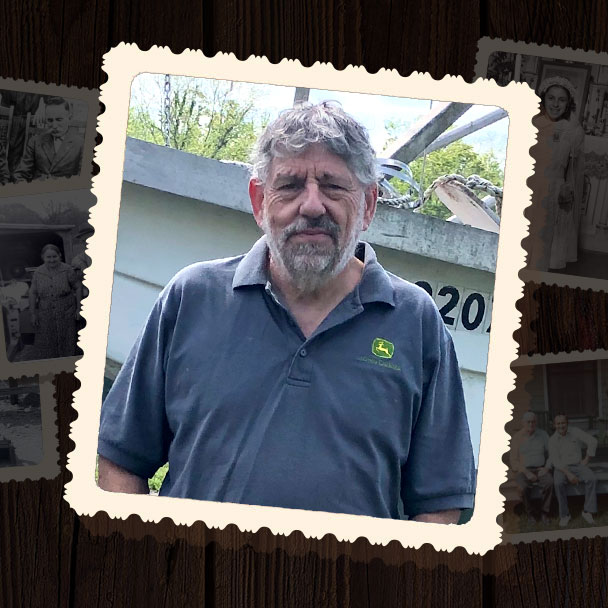
Current Hometown: Thibodaux Rousseau grew up in Grand Bayou with his family on the same property as his grandfather and extended family. His grandfather was a moss picker and he traded his land on Bayou Corn for the land on Grand Bayou to be closer to his job at the moss gin. Favorite Thing to Do Mostly fish. There was not a lot of recreation to where we were able to have a baseball or football team so we mostly fished and hunted. We did some swimming, we all learned to swim in Grand Bayou. They had a little pocket where they docked boats, when the oil field was booming. At this time when I was growing up, it was not used for anything else but to train the kids on Grand Bayou to go swimming. Favorite Memory In the back corner of the property we had two sloughs met and there was a big hole in the back, a little bay we used to call it. That was our fishing hole and there was a huge cypress and a live oak that was leaning over, it had been blown over a long time ago. We’d go back there and climb out on that oak and fish right off of it. That cypress was the biggest I had ever seen. I am not sure if it survived. I did not need a boat or anything I could just fish over the water right there. Most Missed I miss it being above water, I’d say. The property is no longer useable where you can live on. Grand Bayou Traditions I do a lot of fishing and hunting. I just fish different things in different places. In fact I would have been going on a fishing trip tomorrow but with the coronavirus, that had to be cut short. In the back corner of the property we had two sloughs met and there was a big hole in the back, a little bay we used to call it. That was our fishing hole.
